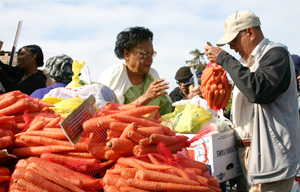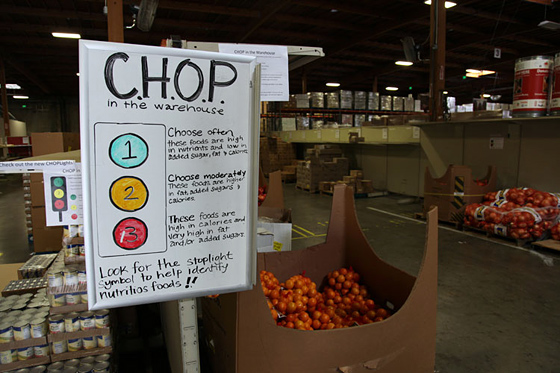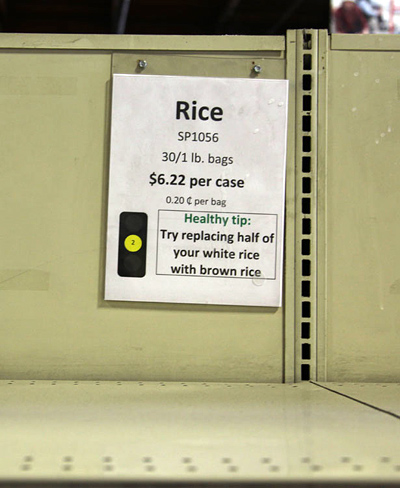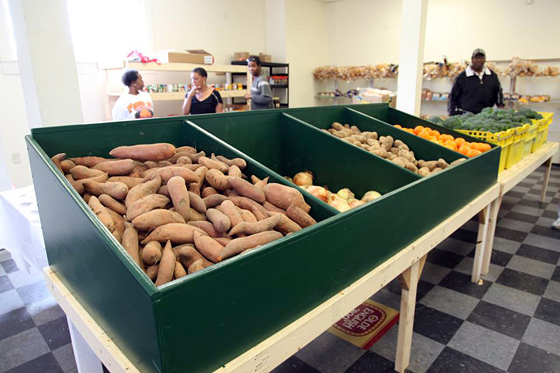
It's not enough to simply feed the hungry. Given the obesity epidemic and other diet-related illnesses, hunger-relief organizations like the Alameda County Community Food Bank are seeking ways to make sure those calories count. They want their clients to have nutrient-dense foods -- including fresh produce -- that will fuel their bodies, not simply stave off the rumblings of an empty stomach.
That mission is clear the minute you enter the ACCFB's vast warehouse. Last Friday, one of the busiest days of the year for the local food bank, Corey Garmon, a nutrition education intern, was positioned at the entrance handing out samples of his sweet potato hash -- made from scratch with a little heat and a lot of heart -- using fresh produce available to food pantry members dashing in for their pre-Thanksgiving pick ups. Those paper cups of comfort food (a simple mix of onions, bell peppers, and bright orange tuber cubes seasoned with red pepper flakes) added a sweet note of tasty cheer on a dreary, cold day. They got snapped right up.
Meanwhile, warehouse workers deftly moved heavy pallets of chicken stock, cranberry sauce, and turkey stuffing in a flurry of activity, while other employees handed out boxes of turkey breasts and volunteers bagged a mountain of carrots.
ACCFB is considered a national leader in efforts to ensure that the neediest receive nourishment. Back in 2005 -- well before the recent soda tax campaigns -- the food bank banned carbonated drinks from its warehouse shelves. It's been making strides to offer more healthy options ever since.
Now, as the biggest eating holiday of the year looms, comes word about the results of an initiative designed to improve the quality of edible offerings in food banks nationwide. ACCFB is one of 12 food banks around the country participating in a program dubbed Healthy Options, Healthy Meals, in collaboration with the nonprofit MAZON: A Jewish Response to Hunger, health care giant Kaiser Permanente, and the University of California, Berkeley's Center for Weight & Health. The program, in place for two years, provides financial and other support to food banks who want to develop and implement formal nutrition policies.


